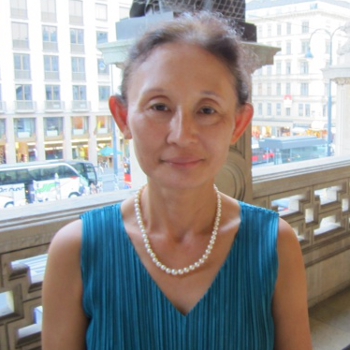Silver linings are few and far between during the time of Covid. Dutch National Opera’s Le nozze di Figaro, presented without an audience but streamed online, succeeds in teasing out the essence of the opera – the upstairs/downstairs class struggle interspersed with a battle of sexes – with brilliant stroke of genius. David Bösch’s 2016 production was cut to about 135 minutes, and adapted to permit performers to maintain at least a 1.5 meter distance from one another (2.5m if they are singing). While at times the performance took on the appearance of a semi-staged concert, those moments were rare, thanks to the high level of musical performance and committed acting of singers.
The chorus and Barbarina were the main victims of the necessity to shorten the opera and to work around the Covid restrictions. A few numbers were deleted, including Figaro and Susanna’s opening duet and Bartolo’s “La vendetta”. But the rest of the opera, as well as recitatives accompanied with a flourish on the harpsichord, was largely kept intact. Riccardo Minasi conducted the orchestra, some members wearing face masks, with clear vision and a sense of joy. The spirited pace of conducting brought out fine details of harmony and dynamics. The bass section was unusually prominent and effective.
Quick and seamless scene transitions were executed with the set on a revolving turntable. The overture introduces the lay of the Almaviva household, from servants’ work area to the aristocratic couple’s bedroom with a towering closet, Cherubino’s room, and the Count’s workout room that turns into a reception room for parties. The Countess is a spoiled, bored wife, the Count is a rich but abusive rogue, with Figaro and Susanna depicted as a cunning, witty pair. The wedding scene quickly deteriorates into a drunken brawl, with party favors littering the floor and a tilted chandelier signaling the decline of the aristocracy. The Countess does not really forgive her errant husband at the end – she points a loaded rifle at him, and just when everyone expects in horror for her to fire, puts it down and laughs it off. Next time, perhaps she will actually pull the trigger...
The young and relatively unknown cast worked hard for a passionate and powerful performance. Ying Fang was a standout as Susanna, her creamy and youthful soprano fitting the role like a glove. She sang with clear, unbroken legato throughout, while injecting enough color to express Susanna’s joy, indignation, amazement and happiness. She executed tricky moves on stage, while maintaining her spot-on acting as a young and ingenuous girl. Riccardo Fassi was her perfect partner-in-crime as Figaro, although it is clear that Susanna was the opera's central figure. Fassi depicted Figaro as an earnest and straightforward servant, eager to marry his sweetheart, his bass attractive, flexible and youthful.
As Count Almaviva, Davide Luciano was a splendid stage animal, flinging dangerous instruments as he expressed his anger and frustration with his wife and the rest of the household. He sang with just the right mixture of power and elegance, authority and smoothness. While she seemed a little stretched in high notes at times, Ruzan Mantashyan was a beautiful and splendid Countess, her voice full and dynamic enough to convey authority and impatience. Like Fang’s Susanna, Mantashyan’s Countess was a strong woman willing to take charge of her destiny. Young mezzo Polly Leech, an ensemble member, was superb in Cherubino's two signature arias, her voice rich and soaring while retaining litheness. She has a bright future ahead.
The performance went by like a flash, with no slack moments or hesitation. It was a pure delight to experience Mozart in a simple, albeit modern setting, with characters and setting stripped of pomp and extravagance. Le nozze di Figaro here was a simple and timeless human drama, penned by a genius over 200 years ago, performed with loving care, courage and dedication by singers and musicians facing such unprecedented challenges.
This performance was reviewed from the Dutch National Opera video livestream




